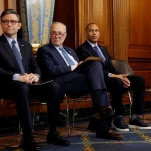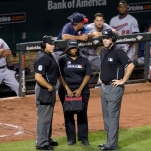This mom is coding iPad apps to help her autistic child explore the world
In late 2008, Sooinn Lee’s baby boy was having trouble hearing, eating and speaking. His doctors warned that he might have developmental delays in the future. Lee was distraught. Like any parent, she wanted to do anything she could to help him. As a developer who had worked in the gaming industry for 12 years, she wanted to use technology to do it.
Lee and her husband, who was getting his doctorate in computer science at the University of California, Berkeley, discovered their son’s condition was serious enough that they wouldn’t be able to go back to the life they had as game developers in South Korea. The family decided to stay in the U.S. Lee started toying with the idea of creating iPhone apps for children with special needs.
“Maybe I can develop something for my child to help him learn and help him explore the world,” Lee remembers thinking. But kids with autism sometimes have trouble with coordination and Lee found the iPhone screen was too small to support apps with which her son could interact. But when Apple launched the iPad with its bigger screen in April 2010, Lee and her husband saw an opening. They started a company, LocoMotive Labs, to develop a suite of iPad apps designed especially for children with autism. When he was about five, their son had been diagnosed with autism.
The premise behind the apps is simple. If a button can be done away with, it’s gone. What’s on the screen is only what’s absolutely necessary. They’ve minimized loud noises and flashy colors that might be distracting or downright stress-inducing for some children. Looking at their products, though, you wouldn’t necessarily realize they were built for children with special needs. And that’s the point, Lee says. She wanted to develop apps that would help autistic children—by getting them acclimated to new social situations, for instance—but that would also appeal to other kids.
-

-

-

-

-

-

-

-

-

-

-

-

-

-

-

-

-

-

-

-

-

-

-

-

-

-

-

-

-

-

-

-

-

-

-

-

-

-

-

-

-

-

-

-

-

-

-

-

-

-

-

-

-

-

-

-

-

-

-

-

-

-

-

-

-

-

-

-

-

-

-

-

-

-

-

-

-

-

-

-

-

-

-

-

-

-

-

-

-

-

-

-

-

-

-

-

-

-

-

-

-

-

-

-

-

-

-

-











































































































